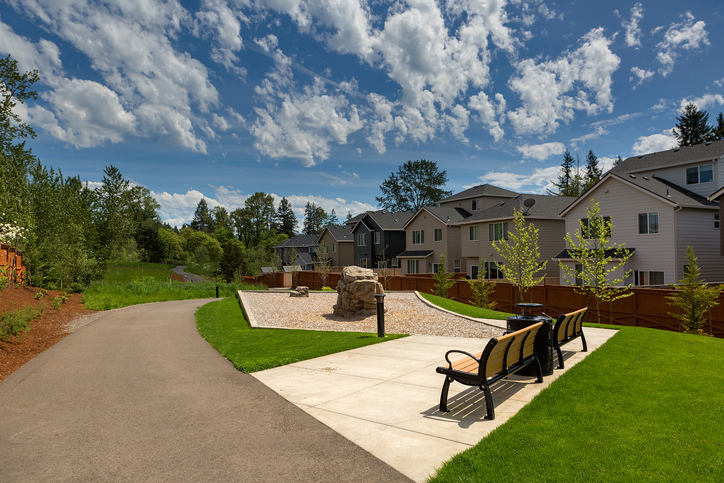The Builder’s Guide to Developing an Inviting Residential Subdivision
When building a new subdivision, developers and builders should aim to create something that will excite would-be homebuyers. Potential buyers need to envision themselves thriving in their new home. Fortunately, there are a variety of things builders like you can do to create the type of subdivisions people want to live in.
From a sense of community to the perfect layout for each lot, here’s your guide to planning and developing a residential subdivision that buyers will want to call home.
Before you get started, read up on subdivision and site design standards
Every municipality has its own set of rules and regulations that govern development of land for residential use. Many communities also have specific guidelines for mitigating common hazards in a region, such as mudslides or wildfires, which can have a massive impact on your subdivision’s eventual design.
Before you start sketching out lots, make sure your team has a full understanding of specific design standards. This will save time, money and headaches in the long run.
Choose a subdivision layout that maximizes space
You want a layout that maximizes the total number of lots you can build, but creating this type of design isn’t always straightforward.
Lots that are too small will make residents feel claustrophobic and unsettled, so you need to allocate enough space for people to relax on their property. Lots that are too big can reduce overall profits. The contour of the land also plays a role in the final layout, which is why it’s so important to look at a contour map when planning. The most welcoming subdivisions also have plenty of trees, greenery and other aesthetically pleasing natural components.
Design with community in mind
Today’s buyers want more than four walls and a yard when they purchase a new home. They also crave a sense of community and want to live in a place where they feel like they belong. In many subdivisions, a sense of community is fostered through parks, playgrounds and sidewalks where people can stroll safely.
Master planned communities are another great way to foster community and they’ve seen increased interest over the past several years. These communities are supportive of a resident’s daily living needs and include features like parks, common areas, fitness facilities, local businesses and shops.
Even if you have no plans to build an entire master-planned subdivision, you can still study their successes to get new ideas for your own project.
Be flexible in your planning, because subdivisions can change as the development matures
If you want the freedom to be responsive to changing market trends and other variables, flexibility is crucial. As any builder knows, plans tend to change frequently in the residential construction industry.
For example, don’t install street improvements (such as new road signs and light posts) to undeveloped sections of the subdivision right away. Add these items to the development as new sections are opened — this provides flexibility to change the layout, lot sizes and other factors as needed.
Learn how you can protect your business and add valuable selling points to your new builds with 2-10 Structural Warranties.








